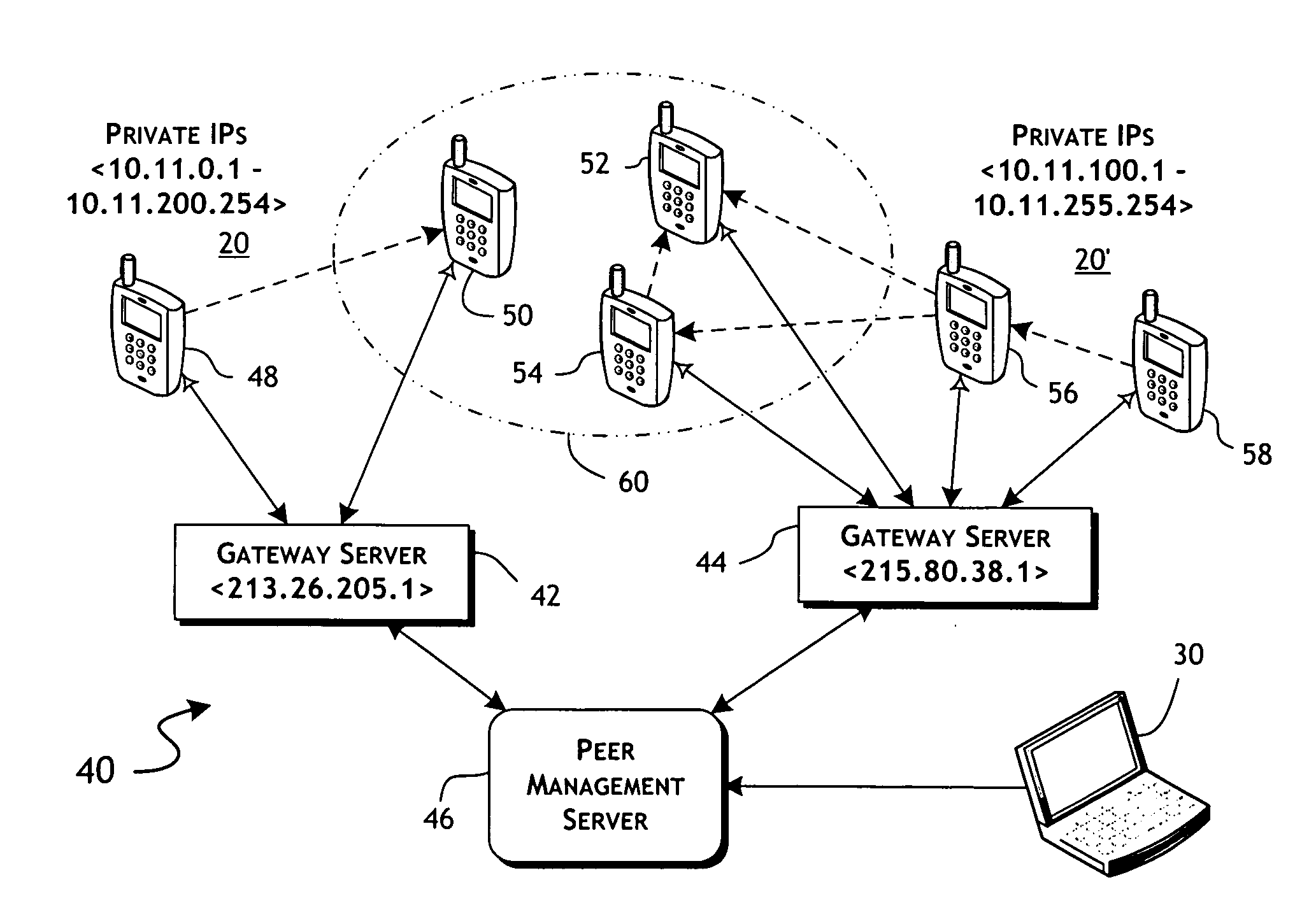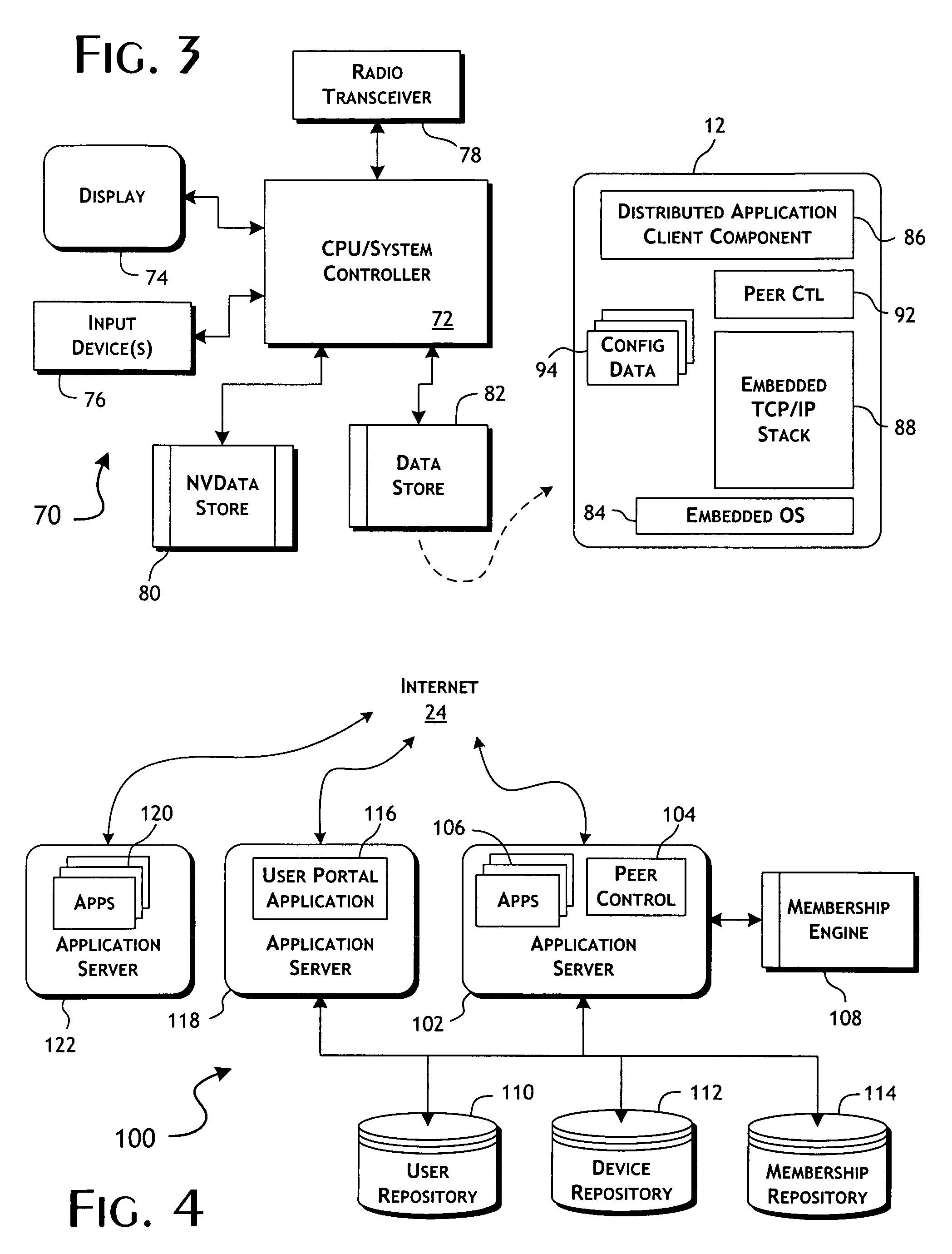Peer shared server event notification system and methods
a shared server and event notification technology, applied in the field of mobile communications systems, can solve the problems of preventing such independent access, limiting the use of the application, and controlling the perceived if not actual performance and commercial effectiveness of the application, so as to achieve efficient distribution of notices, reduce the cost of notice delivery, and optimize time
- Summary
- Abstract
- Description
- Claims
- Application Information
AI Technical Summary
Benefits of technology
Problems solved by technology
Method used
Image
Examples
Embodiment Construction
[0022]A preferred operating environment 10 of the present invention is shown in FIG. 1. As will become clear from the following detailed description of the invention, wherein like reference numerals are used to designate like parts depicted in one or more of the figures, the present invention functionally enables independent service providers to provide proprietary distributed application services, including delivery of data synchronization notices, to client devices 12, operationally independent of the network operators. With respect to the present invention, proprietary distributed application services include commercial and open-source application services that may be duplicative, competitive with, additive, or independent of the distributed application services provided by a network provider or allied service provider.
[0023]In the preferred embodiments, the client devices 12 are typically mobile wireless devices, including cellular telephones 14 and various keyed 16 and pen-base...
PUM
 Login to View More
Login to View More Abstract
Description
Claims
Application Information
 Login to View More
Login to View More - R&D
- Intellectual Property
- Life Sciences
- Materials
- Tech Scout
- Unparalleled Data Quality
- Higher Quality Content
- 60% Fewer Hallucinations
Browse by: Latest US Patents, China's latest patents, Technical Efficacy Thesaurus, Application Domain, Technology Topic, Popular Technical Reports.
© 2025 PatSnap. All rights reserved.Legal|Privacy policy|Modern Slavery Act Transparency Statement|Sitemap|About US| Contact US: help@patsnap.com



